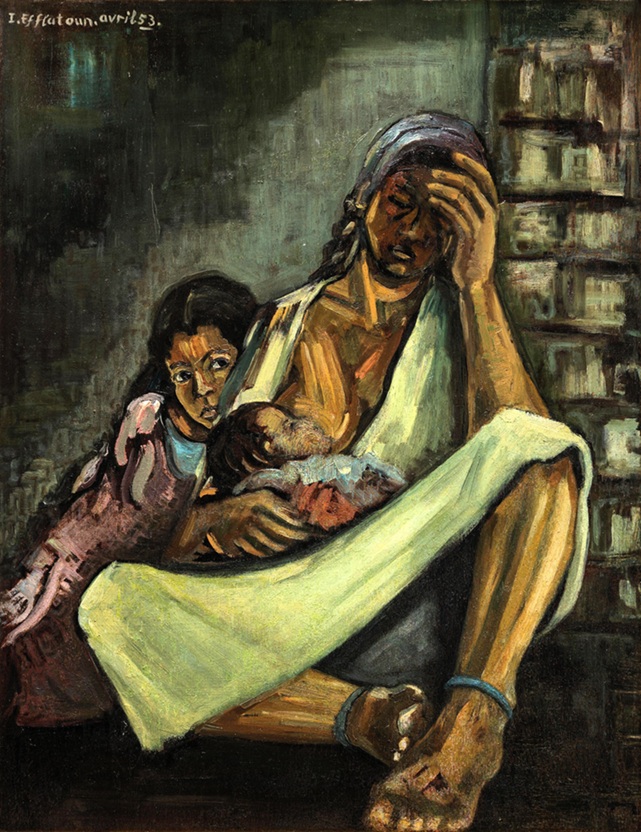Mania Akbari (Iran, born 1974)
Untitled, c. 2008
Diptych, digital print on canvas
each panel 180 x 40cm (70 7/8 x 15 3/4in)
Private collection
Sold for US$8,400 in October 2010
Mania Akbari (September 1974) is an Iranian filmmaker, artist, writer and actress whose works explore women's rights, marriage, sexual identity, disease and body image. Her style, in contrast to the long tradition of melodrama in Iranian cinema, is rooted in the visual arts and autobiography. Because of the taboo themes frankly discussed in her films and her opposition to censorship, she is considered one of the most controversial filmmakers in Iran.[3] As an actress, she is best known for playing the lead role in Abbas Kiarostami's Ten (2002).
Akbari was born in 1974 in Tehran, Iran. Her artistic activities, as a painter, started in 1991 when she took part in various exhibitions in Iran, as well as abroad. She was later exposed to cinema, working as a cinematographer and assistant director on documentary films.
In 2007, Akbari was diagnosed with breast cancer, her struggle with the disease becoming one of the key themes of her films and art works.
From 2007 to 2010, Akbari worked on numerous photography-based works that were featured in various galleries around the world, while she kept making documentary and fiction films until 2011, when during production of her film, From Tehran to London, members of her crew were arrested by Iranian authorities for filming without official permission. Scared she too might be imprisoned, Akbari fled Tehran for London.
Since settling in London, various international retrospectives of Akbari's films have drawn attention to her cinema, among which retrospectives at the BFI, the Oldenburg International Film Festival and the Danish Film Institute are the most notable. More on Mania Akbari
Please visit my other blogs: Art Collector, Mythology, Marine Art, Portrait of a Lady, The Orientalist, Art of the Nude and The Canals of Venice, Middle East Artists, 365 Saints, 365 Days, and Biblical Icons, also visit my Boards on Pinterest and my art stores at deviantart and Aaroko
Images are copyright of their respective
owners, assignees or others. Some Images may be subject to copyright
I don't own any of these images - credit is
always given when due unless it is unknown to me. if I post your images without
your permission, please tell me.
Ads are shown only to compensate the hosting
expenses.
If you enjoyed this post, please share with
friends and family.
Thank you for visiting my blog and also for
liking its posts and pages.
Please note that the content of this post
primarily consists of articles available from Wikipedia or other free sources
online.

.jpeg)
